How To Travel To Vietnam From Australia?
Vietnam is one of Southeast Asia's most captivating destinations, with natural beauty, rich history, and vibrant culture. The country is home to multiple UNESCO Heritage Sites, breathtaking landscapes, ancient cities that are well-preserved to this day, and 54 ethnic minorities, each with its own traditions and colorful attire. For Australians looking to discover a new and exciting destination, Vietnam is both affordable and diverse.
In this guide on how to travel to Vietnam from Australia, we’ll provide everything you need to know to plan your trip. From travel requirements and flights to must-visit destinations, transportation tips, and helpful advice, you'll find all the information to make your Vietnam adventure smooth and enjoyable.
What To Know Before You Travel To Vietnam From Australia?
How far is Vietnam from Australia
Vietnam is located in Southeast Asia, bordering China, Laos, and Cambodia. The capital city is Hanoi, in the north of the country. The distance between Australia and Vietnam depends on where you're flying from. If you're flying from Sydney or Melbourne to Ho Chi Minh City, the flight takes around 8 to 9 hours and covers roughly 6,800 km. Flights from Perth are shorter, around 6 hours, while those from Brisbane take around 9 hours.
The climate
Vietnam has a tropical climate, but the weather changes depending on the region and the time of year.
North Vietnam (Hanoi, Halong Bay, Sapa): The weather has four seasons. Winter (December to February) can be cold, with temperatures dropping to 10°C. Summers (May to August) are hot and humid, reaching up to 35°C. Spring and autumn are more pleasant, with temperatures around 20-25°C.
Central Vietnam (Hoi An, Hue, Da Nang): The region is warm all year round, with temperatures between 20-35°C. The rainy season is from September to December, while the dry season lasts from January to August.
South Vietnam (Ho Chi Minh City, Mekong Delta, Phu Quoc): The south has a tropical climate with two seasons – dry season (December to April) and rainy season (May to November). Temperatures are consistently warm, ranging from 25-35°C.
If you're not a fan of hot weather, avoid traveling to Vietnam during the summer months. The best time to visit is between October and April when the weather is cooler and more comfortable.
The currency
Vietnam's official currency is the Vietnamese Dong (VND). The exchange rate fluctuates, but 1 Australian Dollar is usually worth around 16,000-17,000 VND. It's always a good idea to check the latest rates before your trip.
Cash is widely used in Vietnam, especially in small shops and markets. However, credit cards are accepted in hotels, restaurants, and larger stores. ATMs are easy to find in big cities, but they may charge high fees for foreign cards.
We recommend exchanging some cash before you arrive or withdrawing money at the airport.
Is it safe to travel to Vietnam right now
Vietnam is one of the safest countries in Southeast Asia for travelers. The crime rate is low, and violent crime against tourists is rare. However, like in any other country, you should stay alert.
Pickpocketing can happen in busy areas like markets or bus stations. Always keep your valuables close and avoid flashing expensive items. Traffic can be chaotic, especially in big cities like Hanoi and Ho Chi Minh City, so be careful when crossing the street.
If you're traveling to rural areas, be mindful of food hygiene and drink bottled water.
Overall, Vietnam is a safe and welcoming destination. The locals are friendly and always happy to help tourists.
What Are The Requirements For Australians To Enter Vietnam?
Traveling to Vietnam from Australia is straightforward, but you need to make sure you have the right documents before your trip. The right paperwork will help you avoid any problems at the airport, whether you're going for a short holiday or a longer adventure.
What documents do I need to travel to Vietnam?
To enter Vietnam from Australia, you need:
- A valid passport
- A visa (depending on your length of stay)
- Proof of onward travel (a return ticket or a ticket to another country)
- It's always a good idea to carry travel insurance documents as well.
Passport
Your passport must be valid for at least six months from the date you enter Vietnam. Make sure your passport has at least two blank pages for visa stamps. If your passport is close to expiring, renew it before booking your trip.
Do Australians Need a Visa to Travel to Vietnam?
Yes, most Australian citizens need a visa to enter Vietnam, no matter how long they stay. However, the visa process is quite simple, and there are several options to choose from.
How to get a Vietnam Visa for Australians
You have three options to apply for a Vietnam visa:
Visa at the Embassy
You can apply for a visa at the Vietnamese Embassy or Consulate in Australia. This option is reliable, but it takes more time and involves more paperwork.
To apply, you'll need:
- Your passport
- A completed visa application form
- Passport-sized photos
- Visa fee (payable by card or cash)
- Processing time usually takes 3-5 business days, so plan ahead.
There are 3 offices of the Vietnam embassy or consulate in Australia: one in Sydney, one in Perth, and one in Canberra.
E-Visa
The E-Visa Vietnam is the easiest option for Australian travelers. You can apply for it online before your trip. The e-visa allows you to stay in Vietnam for up to 90 days with a single or multiple entry option.
To apply, visit the official Vietnamese government website: evisa.gov.vn. You'll need:
- A scanned copy of your passport
- A passport-sized photo
- Credit or debit card for payment via an electronic gateway (non-refundable)
The application takes about 3 working days to process, and the cost is around 25 USD for single entry or 50 USD for multiple entry.
Visa on Arrival
Australian passport holders are not able to obtain Vietnam visas on arrival, so stick to one of the two options above.
How much does a Vietnam visa cost for Australian citizens?
Visa fees vary depending on the type of visa:
- E-Visa (single entry, up to 90 days): 25 USD
- E-Visa (multiple entry, up to 90 days): 50 USD
- Embassy Visa (varies depending on duration and type): 50-100 USD
Having the right visa is one of the most important steps to ensure a smooth journey to Vietnam. Once your documents are ready, you're one step closer to exploring this amazing country!
How To Travel To Vietnam From Australia?
Flying from Australia to Vietnam is the fastest and easiest way to reach this beautiful destination. With several airlines offering flights, you have plenty of options to choose from.
Departure and arrival airports
In Australia, the main departure airports for flights to Vietnam are:
- Sydney Airport (SYD)
- Melbourne Airport (MEL)
- Brisbane Airport (BNE)
- Perth Airport (PER)
- Adelaide Airport (ADL)
In Vietnam, the most common arrival airports are:
- Noi Bai International Airport (HAN) in Hanoi (North Vietnam)
- Tan Son Nhat International Airport (SGN) in Ho Chi Minh City (South Vietnam)
- Da Nang International Airport (DAD) in Central Vietnam
Ho Chi Minh City is the busiest airport, with the most direct flights from Australia. If you're visiting Northern Vietnam, Hanoi will be your best option.
Airlines and Flights
Several airlines operate flights between Australia and Vietnam. You can find both direct and connecting flights depending on your budget and schedule.
Which Airlines Fly Direct from Australia to Vietnam?
- Vietnam Airlines (Sydney, Melbourne, Perth → Ho Chi Minh City, Hanoi, Danang)
- Bamboo Airways (Melbourne, Sydney → Hanoi, Ho Chi Minh City)
- Jetstar (Melbourne, Sydney → Ho Chi Minh City, Hanoi)
Airlines with Connecting Flights:
- Singapore Airlines (via Singapore)
- Cathay Pacific (via Hong Kong)
- Malaysia Airlines (via Kuala Lumpur)
- Qantas (via Singapore or Hong Kong)
Direct flights are faster and more convenient, but connecting flights can often be cheaper.
Flight schedule and frequency
Flights from Australia to Vietnam are frequent, especially from major cities like Sydney and Melbourne. Direct flights usually operate daily or several times a week, depending on the airline.
Flight duration varies depending on your departure city:
- Sydney to Ho Chi Minh City: 9-10 hours
- Melbourne to Hanoi: 9-10 hours
- Brisbane to Ho Chi Minh City (connecting flight): 15-20 hours
Flight costs
Flight prices can vary depending on the season, airline, and how early you book. On average, a round-trip economy class ticket costs:
- Direct flights: 800-1,200 AUD
- Connecting flights: 600-900 AUD
Peak seasons like December to February and July to August tend to have higher prices. If you're traveling during these months, book your flights early.
How to book cheap flights to Vietnam from Australia
Booking a flight at the right time can save you a lot of money, leaving you with more to spend on your adventures in Vietnam. To find the best deals, here are some tips:
- Book your flights 3-6 months in advance for the lowest prices.
- Use flight comparison websites like Skyscanner or Google Flights.
- Be flexible with your travel dates. Mid-week flights are usually cheaper than weekends.
- Consider flying with low-cost carriers like Jetstar if you're on a budget.
- Sign up for airlines' newsletters to get updates on promotions and discounts.
What To Bring And Not To Bring To Vietnam
Packing for Vietnam depends on when and where you're traveling. Vietnam's climate varies from North to South, so it's important to prepare for different weather conditions.
What to Bring to Vietnam:
- Lightweight clothes for the hot weather, especially if you're visiting the South or the coast. Breathable fabrics like cotton and linen are the best choices.
- Warm layers if you're traveling to Northern Vietnam between November and February. It can get chilly in Hanoi, Sapa, and the mountainous regions.
- Comfortable shoes for walking and exploring cities, markets, and nature trails.
- Sun protection like sunscreen, sunglasses, and a hat. The sun can be strong, especially in Central and Southern Vietnam.
- Insect repellent if you're visiting the countryside or the Mekong Delta. Mosquitoes can be an issue in tropical areas.
- Travel adapter (Type A, C, or F plugs) to charge your devices. Vietnam's voltage is 220V.
- Medication and basic first aid. Bring any prescription medicines you need, as some might not be available locally.
What Not to Bring to Vietnam:
- Too many heavy clothes — Vietnam is generally warm, and you won't need bulky items unless you're heading to the mountains.
- Jewelry or valuables — It's better to leave expensive items at home to avoid losing them.
- Illegal substances or prescription medication without proper documents — Vietnam has strict drug laws.
- Too much cash — Credit cards are widely accepted in big cities, and ATMs are easy to find.
What To Visit In Vietnam For Australian Tourists?
Hanoi – The Timeless Capital
Hanoi, the thousand-year-old capital city, and the perfect place to start your journey. The city blends ancient history with modern energy, giving you a glimpse into Vietnam's rich culture. The Old Quarter is a must-see, with colonial buildings, small shops, and busy street food stalls. Take a leisurely stroll around Hoan Kiem Lake, where locals gather for morning exercises.
Don't miss the Ho Chi Minh Mausoleum, the final resting place of Vietnam’s revolutionary leader, and the Temple of Literature, Vietnam’s first university. Hanoi’s cuisine is another highlight — try pho bo (beef noodle soup) and bun cha (grilled pork with noodles) at local eateries.
Halong Bay – Natural Wonder of the World
A trip to Vietnam wouldn’t be complete without visiting Halong Bay. This UNESCO World Heritage Site is known for its emerald waters and thousands of limestone islands. The best way to explore Halong Bay is on a cruise, where you can sail among the karst formations, kayak through hidden caves, and watch the sunset over the bay.
Halong Bay offers both day trips and overnight cruises, depending on how much time you have. If you want a quieter experience, choose nearby Bai Tu Long Bay, which is just as beautiful but less crowded.
Hoi An – The Charming Ancient Town
Hoi An is one of Vietnam's most beautiful and romantic cities. Its well-preserved old town is full of yellow-walled houses, lanterns, and riverside cafés.
You can spend your days exploring the town, visiting tailor shops to have custom clothes made, or learning how to cook Vietnamese dishes in a local cooking class. Just a short drive away, An Bang Beach offers a perfect spot to unwind.
Da Nang – Beaches and Modern Vibes
Da Nang is a vibrant coastal city that combines stunning beaches with a modern cityscape. It’s a great stop for Australian tourists who enjoy both relaxation and sightseeing.
My Khe Beach is one of Vietnam’s best beaches, with golden sand and warm waters. For adventure seekers, a trip to the Marble Mountains offers hiking and cave exploration. Don’t forget to visit the Golden Bridge at Ba Na Hills — a unique pedestrian bridge held up by giant stone hands.
Ho Chi Minh City – The Dynamic Metropolis
Ho Chi Minh City (formerly Saigon) is Vietnam’s largest and most dynamic city. It’s a place where old and new collide, with skyscrapers standing next to colonial buildings and traditional markets.
History buffs will enjoy visiting the War Remnants Museum and the Cu Chi Tunnels, which give insight into Vietnam’s wartime history. The city’s nightlife is lively, with rooftop bars and bustling night markets.
Food lovers can try banh xeo (Vietnamese pancakes), com tam (broken rice with grilled pork), and the famous Vietnamese iced coffee.
Phu Quoc Island – Beach Paradise
If you're looking for a relaxing beach holiday, Phu Quoc is the perfect place to end your Vietnam journey. This tropical island in the south of Vietnam is known for its white-sand beaches and crystal-clear waters.
You can spend your days swimming, snorkeling, or simply lounging on the beach with a coconut in hand. Phu Quoc also has a growing food scene, with plenty of seafood restaurants and night markets.
How To Get Around In Vietnam?
Getting around Vietnam is easy, with various options depending on your budget and destination.
Domestic Flights:
Flying is the fastest way to travel between major cities like Hanoi, Ho Chi Minh City, and Da Nang. Airlines like Vietnam Airlines, Bamboo Airways, and VietJet Air offer regular flights at affordable prices.
Trains:
Vietnam's railway system connects most major cities. The Reunification Express runs from Hanoi to Ho Chi Minh City, offering scenic views along the coast. Trains are comfortable but slower than flights.
Buses:
Buses are the cheapest way to travel around Vietnam, with both short-distance and long-distance options. Sleeper buses are common for overnight journeys.
Taxis and Ride-Sharing Apps:
In cities, taxis and ride-hailing apps like Grab are convenient for short trips. Always choose reputable companies like Mai Linh or Vinasun to avoid scams.
Motorbike Rentals:
Renting a motorbike is a popular way to explore smaller towns and countryside areas. However, traffic in cities like Hanoi and Ho Chi Minh City can be chaotic, so it's not recommended if you're not experienced.
Cyclo and Electric Cars:
In cities like Hanoi and Hue, cyclos (three-wheeled bicycles) and electric cars offer a fun way to explore at a slower pace.
Where To Exchange Money In Vietnam?
When traveling from Australia to Vietnam, you'll need to exchange your Australian dollars (AUD) into Vietnamese dong (VND). While some places accept USD or credit cards, cash is still the most common way to pay, especially in rural areas and small businesses.
Banks:
The safest place to exchange money is at official banks. Most banks offer fair exchange rates and reliable service. Popular options include:
- Vietcombank
- BIDV
- Techcombank
Tips: Banks are usually open from 8:00 AM to 4:30 PM, Monday to Friday. Bring your passport for identification.
Currency Exchange Offices:
Some gold shops and exchange offices offer better rates than banks, especially in cities like Hanoi and Ho Chi Minh City. Try:
- Hanoi: Ha Trung Street (a popular street for currency exchange)
- Ho Chi Minh City: Hung Long Money Exchange at 86 Mac Thi Buoi, District 1.
Airports:
You can exchange small amounts at the airport upon arrival, but the rates are not the best. Use this option only if you need cash immediately.
ATMs:
ATMs are widely available and a convenient way to withdraw VND directly. However, most ATMs charge a small withdrawal fee. Vietcombank, Techcombank, and BIDV ATMs are reliable options.
Tips For Visiting Vietnam From Australia
A trip to Vietnam can be a wonderful experience if you plan well and know what to expect. Here are some practical tips to make your journey smooth and enjoyable.
SIM Card & Internet:
Staying connected in Vietnam is easy. You can buy a local SIM card at the airport or mobile shops. The most reliable providers are Viettel, Vinaphone, and Mobifone. A SIM card with 4G data costs around 200,000 – 300,000 VND (12-18 AUD).
Tipping:
Tipping isn't expected in Vietnam but always appreciated. In restaurants, you can leave a tip if you're happy with the service. Tour guides and drivers often receive small tips as well.
Etiquette:
- Dress modestly when visiting temples and pagodas.
- Take off your shoes before entering someone's home or religious sites.
- Use both hands to give or receive something, especially to older people.
Language:
English is widely spoken in tourist areas, but learning a few Vietnamese phrases like "Xin chào" (Hello) or "Cảm ơn" (Thank you) can be helpful and appreciated by locals.
Water & Food Safety:
Drink bottled water and avoid ice in street drinks unless you're sure it's made from filtered water. Street food is delicious but stick to busy stalls with a high turnover of customers.
Travel To Vietnam From Australia With An Agency
Planning a trip to Vietnam can feel overwhelming, especially if it's your first time visiting. Booking your holiday through a local travel agency can make everything easier and more enjoyable.
At Vietnam Original Travel, we have over 20 years of experience organizing custom tours for travelers from around the world. We know the best places to visit, where to stay, and how to create unforgettable experiences.
Why Choose Vietnam Original Travel?
- Personalized itineraries tailored to your preferences
- Local guides who know Vietnam inside and out
- Experts and guides speaking mulitple languages
- 24/7 customer support during your trip
- Transparent pricing with no hidden fees
- Responsible tourism that supports local communities
Whether you're looking for a cultural journey, an adventure holiday, or a relaxing beach vacation, we can help you design the perfect trip.
Conclusion
By following this guide on how to travel to Vietnam from Australia, you'll be well-prepared to navigate your journey and make the most of your time in this beautiful country. Hopefully, every moment in Vietnam will leave you with lasting impressions.
For a hassle-free and personalized travel experience, consider booking your tour with Vietnam Original Travel. With over 20 years of experience, we offer tailored itineraries and expert guidance to help you discover Vietnam at its best. Contact us today and let us create the perfect Vietnam adventure for you!
Send us your comments about : How To Travel To Vietnam From Australia?
Required fields *
You might also be interested
Our clients’ favorite journeys to customize
Looking for inspiration? Discover some of our most popular tours in Vietnam, highly appreciated by our travelers. They are a great starting point to help you choose the perfect journey through Vietnam, Laos, Cambodia, Myanmar, or Thailand—whether you’re traveling solo, as a couple, with family, or with friends.
And since this is your trip, feel free to customize it just the way you like!
Vietnam Cambodia Itinerary 14 Days
Hanoi – Hoa Binh – Mai Chau – Ninh Binh – Halong bay – Hue - Danang – Hoian – Saigon – Ben Tre - Can Tho – Saigon - Siem Reap Angkor - Tonlé Sap - Siem Reap – Ta Prohm - Departure
Vietnam 14 Day Itinerary
Vietnam 14-day itinerary covers the country’s top highlights and quintessential experiences for an unforgettable journey.
Honeymoon Tour Pakcages In Vietnam 12 Days
Saigon Arrival - City Tour – Mekong Delta – Danang – Hoian - by flight - Da Nang – Hanoi - by flight – Halong - overnight on junk – Departure
Authentic Hoang Su Phi Trekking Tours
Hoang Su Phi trekking tours take you to stunning terraces, meet few tourists, connect with locals and enjoy authentic culture.
Best Nha Trang Beach Tour 4 Days
Saigon/Hanoi – Nha Trang relaxation – Saigon/Hanoi – Departure
Mekong Delta Bike Tour Itinerary 7 Days
Cycle through the Mekong Delta in 7 days, discovering floating markets, orchards, craft villages, and tranquil green islands.
Are you interested in this tour?





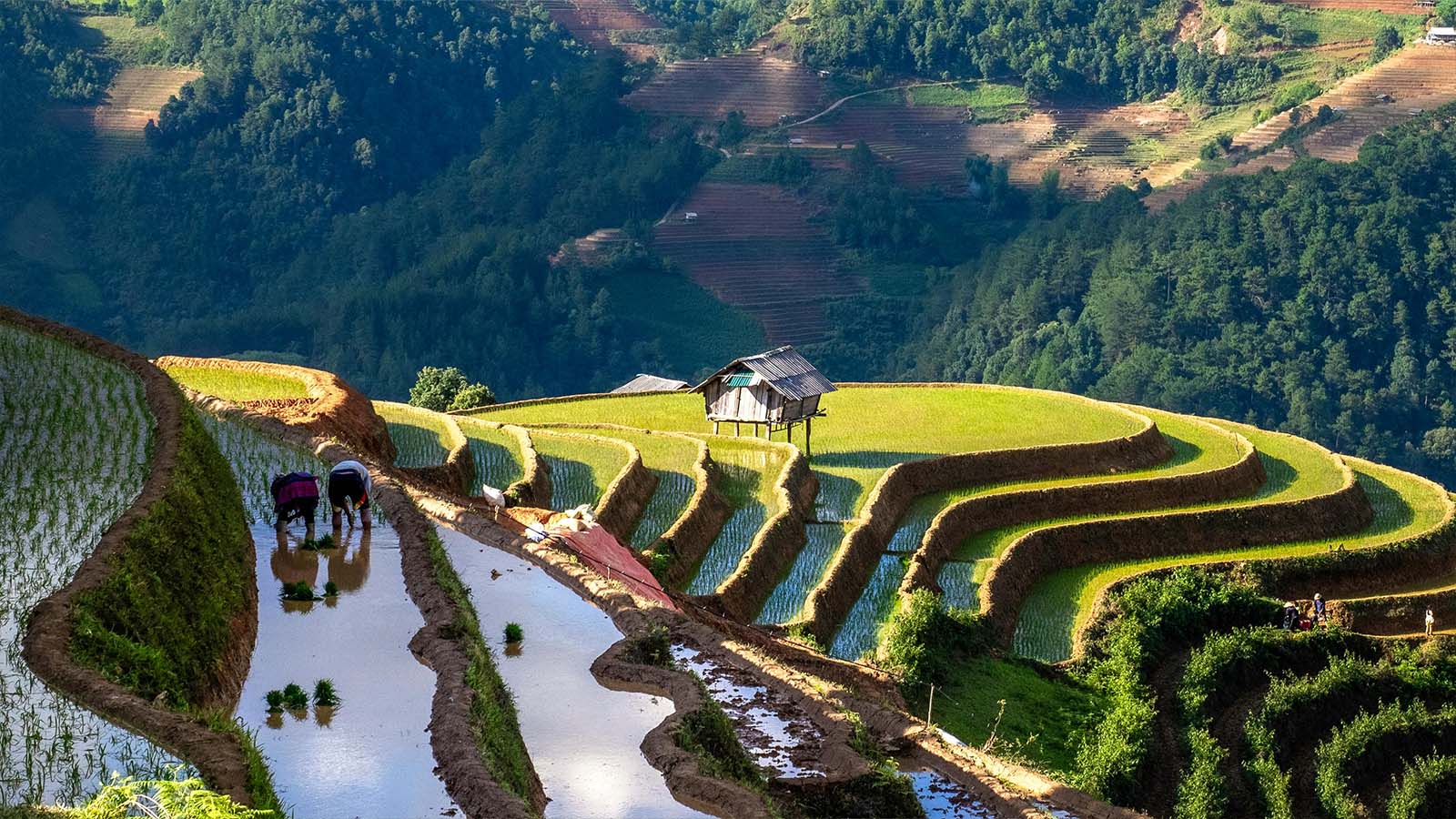
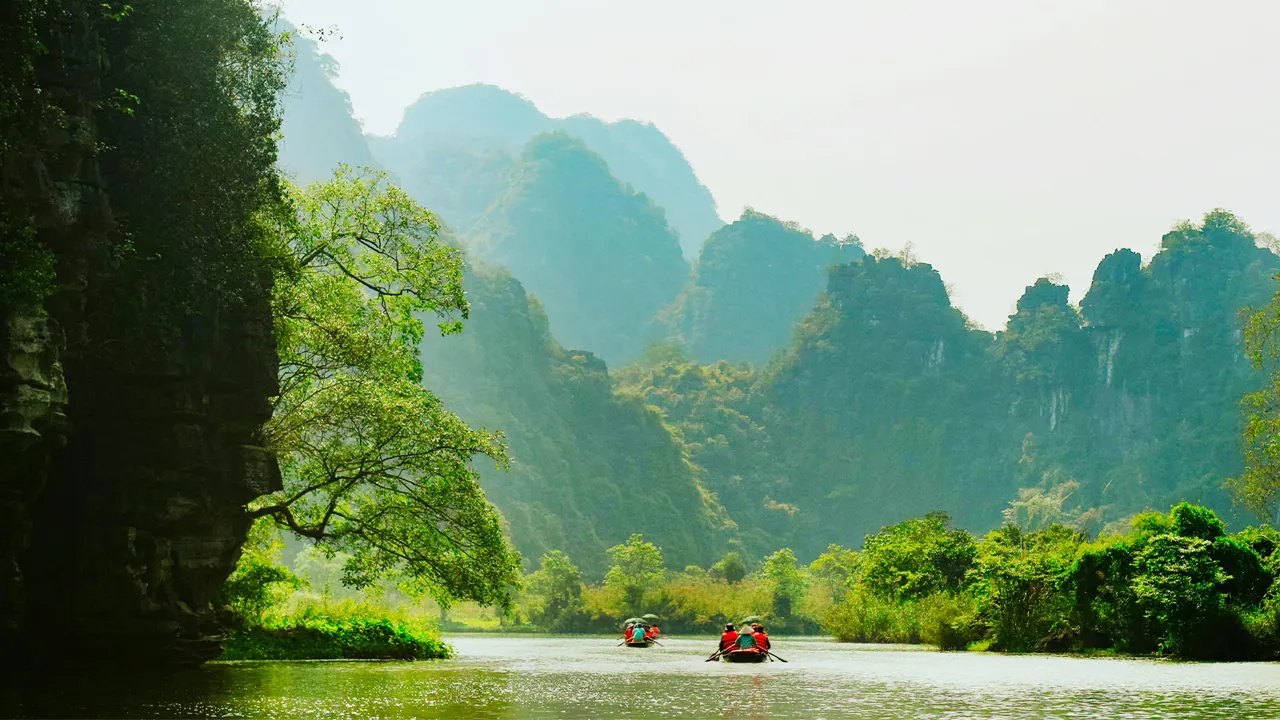

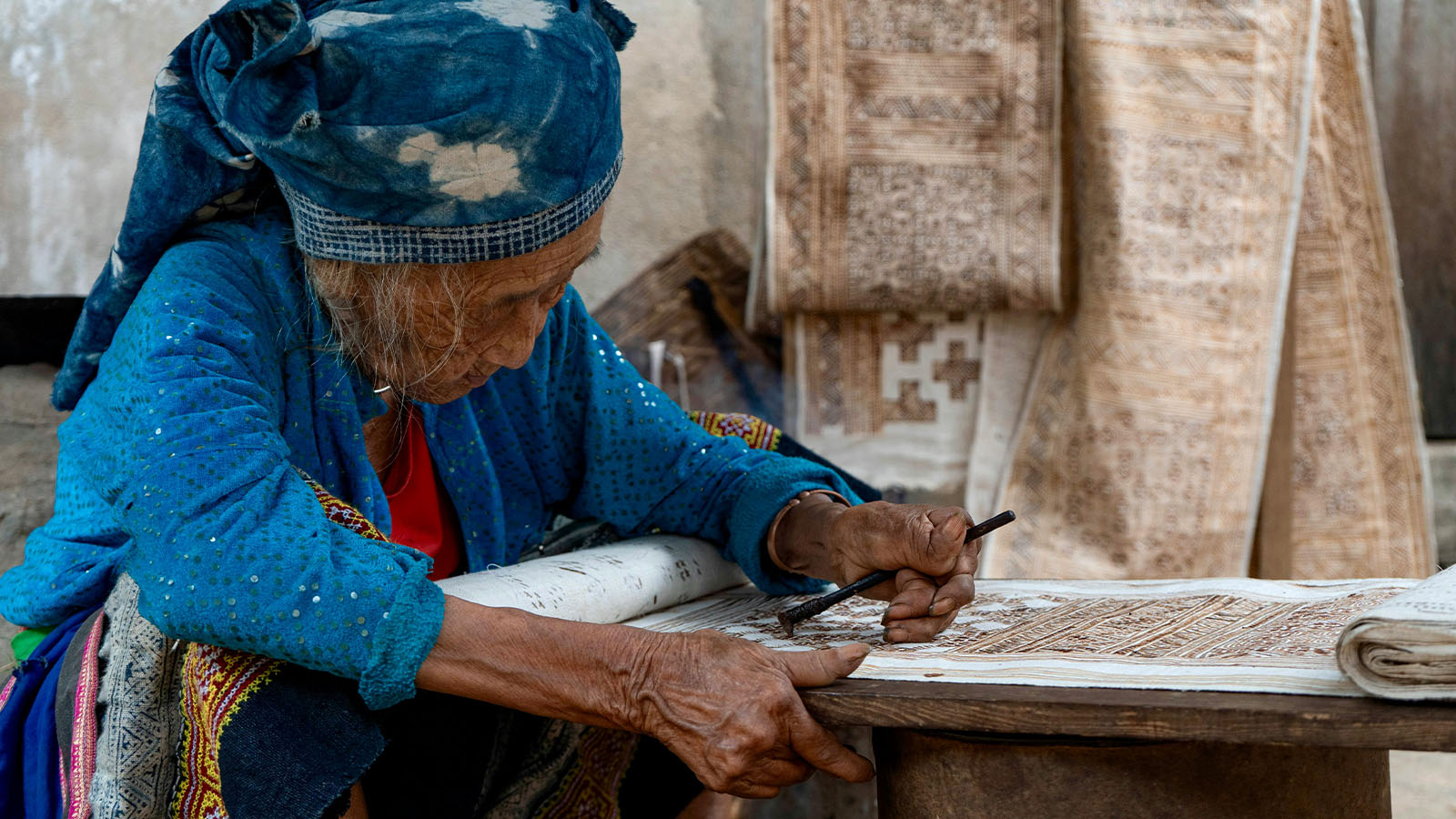




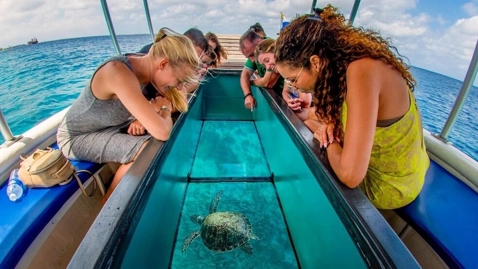
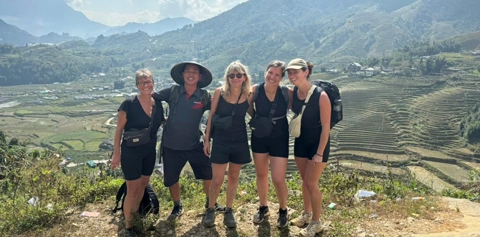
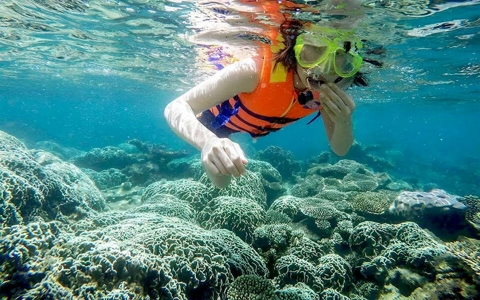
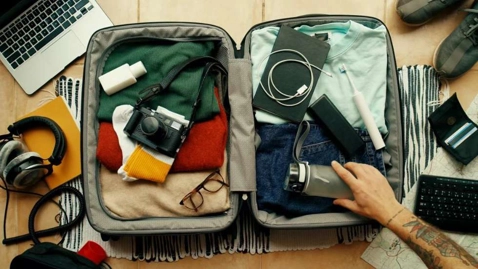
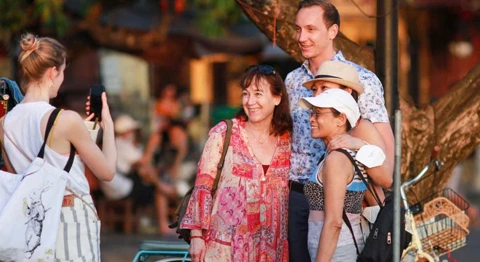
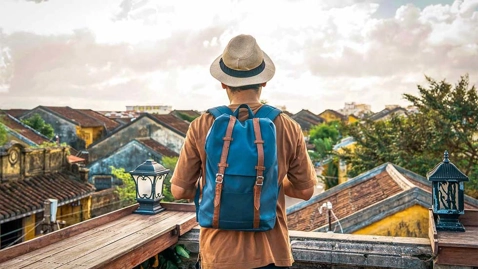
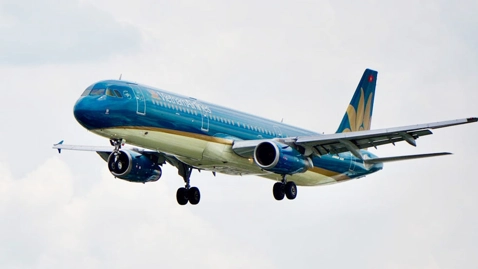
















Comment